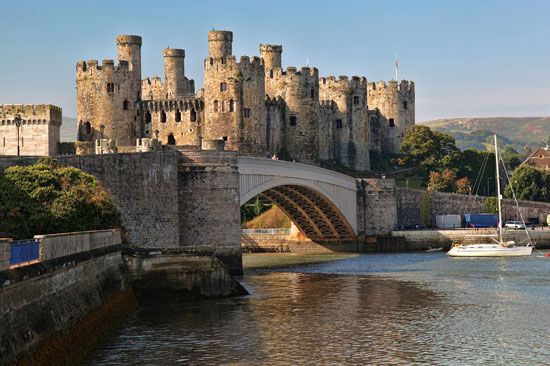Wales, often recognized for its stunning landscapes and rich cultural heritage, also has a remarkable ecclesiastical identity that may pique the curiosity of many: the Church in Wales. But what makes this establishment unique in the greater context of Christianity, particularly in a landscape traditionally dominated by other denominations? Moreover, given its history and the challenges it faces today, what does its existence signify for the followers of Christ?
To grapple with these questions, one must first acknowledge the roots of the Church in Wales. Formed in discontent with the established Church of England, the Church in Wales was disestablished in 1920. This pivotal moment is crucial, as it marked the transition from an Anglican Church under the direct influence of the British monarchy to an independent entity governed by Welsh interests. Disestablishment was a response to the growing sense of national identity among the Welsh during a time of significant political, social, and cultural change. The question becomes, what were the implications of this transition for the religious landscape in Wales?
Initially, disestablishment underscored a longing for a church that resonated with Welsh culture and pride. The Church in Wales sought to provide a worship experience that integrated the language and heritage of the Welsh people. It presented a divergence from a monolithic Anglicanism, driving the Church to explore how to communicate faith effectively within a unique cultural context. A playful question arises: Can a church thrive purely on cultural identity, or must it be rooted in a broader doctrinal foundation? This suspense may challenge believers to look deeper into the essence of faith beyond cultural expedients.
The Church in Wales operates as a province of the worldwide Anglican Communion, which places it in a larger ecumenical tent. This relationship allows the Church to access a wealth of theological resources and support. The influence of the Anglican Communion is evident through its commitment to the sacraments, the rich tradition of liturgical worship, and the centrality of scripture. However, faced with contemporary issues such as secularism and societal change, the Church in Wales finds itself at a crossroads. How does it maintain its relevance in an age where many consider themselves ‘spiritual but not religious’?
In examining the role of the Church in Wales, one must consider its fundamental mission: to embody the love of Christ and serve as a beacon of hope in communities. The Church prioritizes various outreach initiatives, education programs, and social justice advocacy, attempting to remain presently engaged within the modern Welsh context. Yet, these efforts may hinder their ability to sustain deeper theological conversations. With individualism on the rise, how can such a church confront the challenge of building community amongst its congregants?
Furthermore, one cannot ignore the surge of younger generations disengaging from institutionalized religion altogether. The ministry of the Church in Wales now faces the critical task of defining its identity in a society characterized by pluralism and diverse belief systems. Church leaders grapple with the question of how to remain anchored in Christian teachings while also fostering inclusivity. Are these two goals compatible, or does the necessitated dilution of doctrine lead to a loss of the Church’s original mission?
In such a context, the role of the clergy is essential. They serve not only as spiritual guides but also as cultural translators of Christian doctrine. Their ability to communicate the teachings of Christ through the lens of Wales’ unique heritage shapes the perceptions of faith for a new generation. A noteworthy reflection lies in how leaders within the Church address their ecclesial challenges while staying faithful to the gospel. Is it possible for the Church to evolve without forsaking its core values, or does any transformation compromise theological integrity?
The language of worship is also a defining pillar of the Church in Wales. With a significant dedication to the Welsh language, the Church seeks to create a space where both the worship experience and the theological discourse resonate with the local populace. Finally, can the nuances of language encapsulate the truths of faith, or are expressions of spirituality universal, transcending linguistic barriers?
Moreover, the interdenominational relationships that the Church in Wales fosters can either be a source of strength or contention. Amidst the push toward ecumenism, how does the Church remain steadfast in its distinctive beliefs while collaborating constructively with other Christian circles? The complexity of navigating this theological landscape mirrors broader societal questions about unity and diversity within faith communities. The potential for cross-pollination of ideas could lead to a revitalization of faith when approached with care and understanding.
As more individuals embark on spiritual journeys, the Church in Wales stands at a distinctive juncture. It must carefully balance heritage with innovation, tradition with modernity, and doctrine with cultural relevance. The critical challenge lies not simply in maintaining existing parishioners, but in crafting a narrative of faith that draws the curious—those who seek, question, and desire connection. In so doing, can the Church in Wales effectively serve as a conduit of God’s love, inviting both the steadfast believer and the skeptical seeker to explore the depths of Christianity in this enchanting Welsh landscape?
In conclusion, the Church in Wales showcases an intricate tapestry of faith interwoven within the broader cultural, historical, and social framework of Welsh society. As it continues to adapt, the ongoing dialogue of identity, engagement, and mission will be pivotal to its future. Perhaps the greatest challenge lies not just within the Church itself but in how it is perceived, and ultimately embraced, by the communities it aims to serve.



